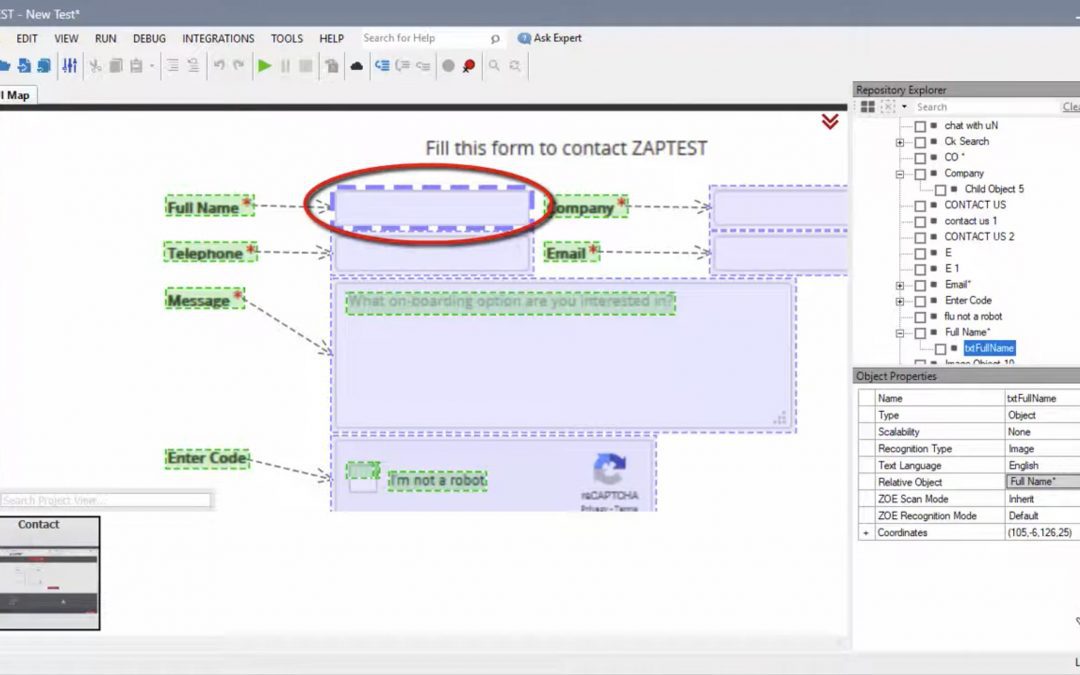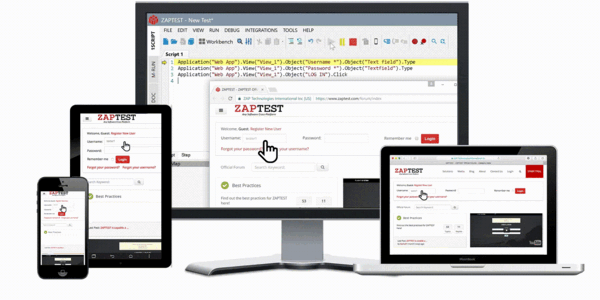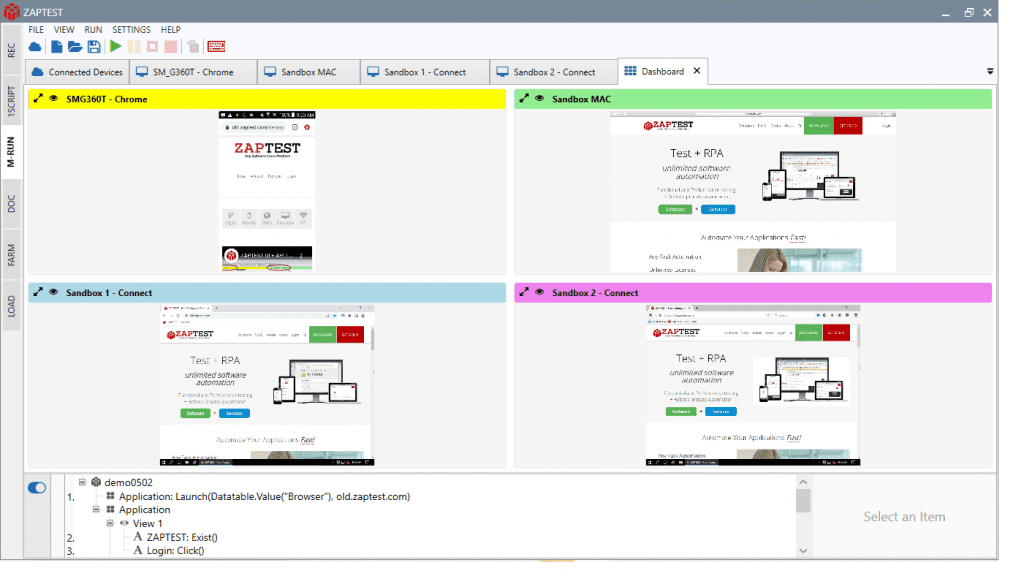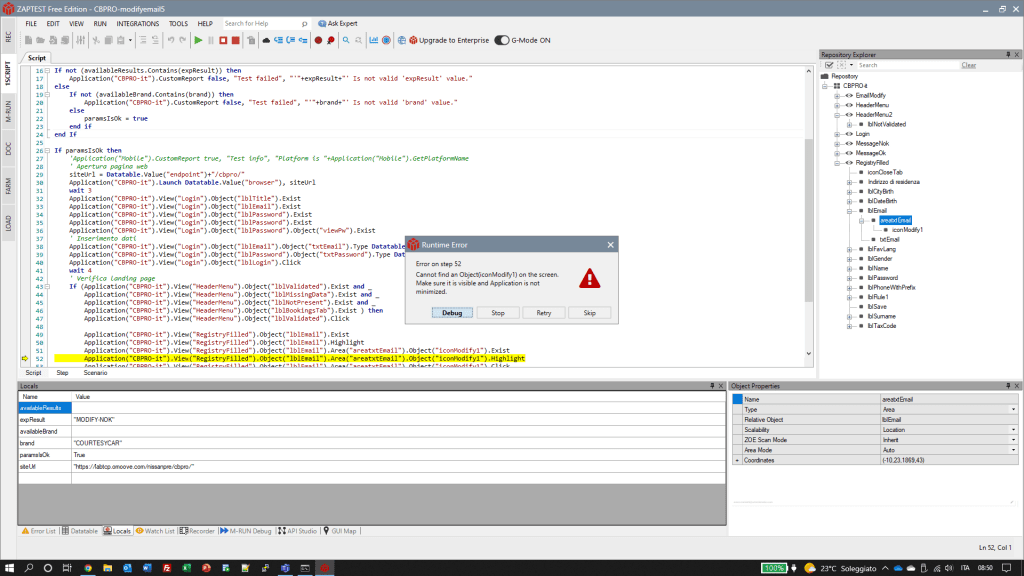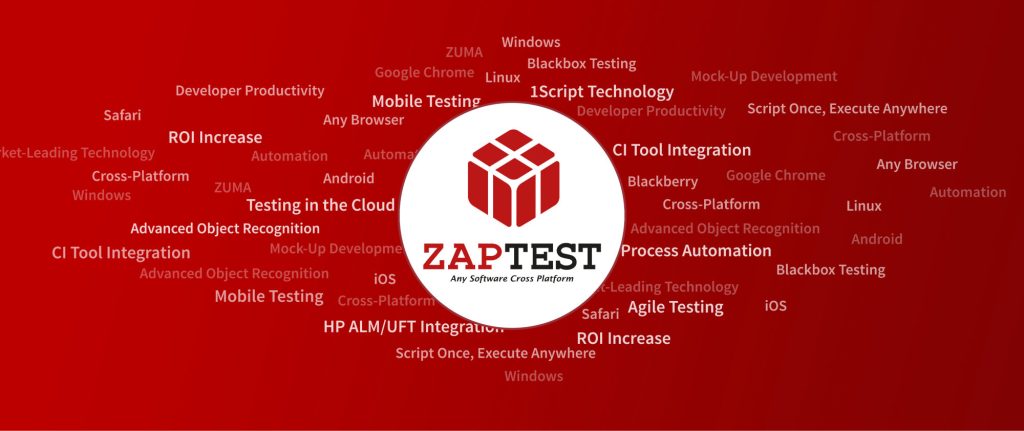Backend testing is a particularly important branch of software testing with plenty to offer any developer – your approach to this method may determine the overall success of your application.
This is also known as database testing and helps you avoid serious complications that could otherwise damage your software.
Backend testing has various benefits and challenges which you’ll need to take into account before implementation, resulting in a stronger product that meets your standards and goals.
Understanding backend testing and how it works allows you to use the technique to your advantage. There are a number of specific tests and tools that might help you spot issues before they have a chance to become even minor problems.
In this guide, we look at every essential consideration of backend testing to demonstrate the best course of action. This includes how to implement backend testing and create an even stronger application in the process.
What is Backend Testing?
Backend testing is a form of testing that involves checking a software application’s database – ensuring it stays free of issues such as corruption, data loss, and more.
This allows you to ensure that everything about the software fits together as it should and will be able to stand up to scrutiny following the eventual launch.
Database Testing specifically looks at how an application stores information and the ways this supports the software’s functionality, looking for any concerns that would be invisible to a user but could affect their experience.
Backend testing could be a vital aspect of your overall quality assurance process.
1. When and why do you need to do Backend Testing?
The exact point in development where you conduct backend testing does vary, though testers often prefer this in the earlier stages of quality assurance.
This is primarily because it helps the team find fundamental software issues that require a quick solution in order to develop a viable product.
The issues that this form of testing uncovers may become more complex to fix in later stages, making it essential that you address them as quickly as possible. As with any form of testing, this is important because it improves the overall experience for clients and customers, making their software better.
2. When you don’t need to do Backend Testing
While backend testing is an essential component of many software checks, it’s not always the right choice – as this involves inspecting the database, applications that don’t heavily rely on server-side data won’t benefit.
3. Who is involved in Backend Testing?
Backend testing involves the help of many people throughout the business who work together to guarantee a smooth launch.
The main contributors to this are:
• Database testers:
These quality assurance experts rigorously inspect the software database from all angles to see if the features work correctly or need fixing.
• Developers:
The software developers use these tests to determine what they must do in order to repair their application and ensure it functions as expected.
• Project managers:
The leads on that project also often sign off on the essential changes and ensure the product’s most robust iteration is released.
The benefits of Backend Testing
There are many advantages to backend testing, including:
1. Improved customer experience
By making sure the database is as strong and as functional as it needs to be, you can ensure that customers get the best possible experience with few glitches, if any.
This also leads to your software receiving better reviews, increasing its popularity alongside the number of purchases – making your firm more money.
2. In-depth software inspections
Backend testing complements your frontend testing procedures, letting you tackle these problems on either side of development.
The former approach already inspects your software at a deeper level than various other tests but combining it with other checks helps to ensure that your product is definitely ready to launch.
3. Adaptable and scalable
Every test you conduct on the application’s backend is scalable to suit the exact functionality and scope of your product; you’re able to easily adapt a whole suite of tests to match your needs.
This also lets you check how an app is likely to function for customers long-term, especially after multiple feature updates.
4. No data loss
Avoiding backend testing could prevent you from uncovering serious data loss or corruption issues that put the entire application at risk.
Implementing this approach secures the validity of your data and grants you peace of mind about this software – helping to guarantee an effective and successful product launch that offers every function as advertised.
5. Easy to conduct
Your testers can check the application’s database at any point in development (even after release) to deal with issues as they emerge or eliminate them before they affect the user experience.
While testers generally prefer to do backend testing early on, they can conduct these checks at any point in the process if necessary.
The challenges of Backend Testing
While backend testing is often a crucial process for any software development team, it also involves challenges and even risks that should be considered, such as:
1. Insufficient checks
The strength of your backend testing processes depends on how thorough these tests are – for example, black-box testing only inspects the backend via the user interface.
You’ll need to make sure your testing team is able to run a broader battery of tests so they can guarantee the software database works as expected.
2. Lack of communication
It’s essential that you avoid information silos in the workplace, as a lack of communication may lead to testers being unaware of changes to the software that require their attention.
Make sure every department is informed about the current product stage and the need for (or results of) ongoing tests.
3. Using improper datasets
Backend testers often use mock data to quickly check how a database responds to user inputs. Unless the data accurately reflects how people would use this software, mock data can be quite limited.
Take the extra time to test the application with data that it’s likely to encounter during its operation.
4. Potential for added costs
Your backend testing could become an unnecessarily large expense without the correct approach. Automating this process could be cheaper long-term, though this again depends on the service you select and the software complexity.
By investing in a commercial solution that accommodates your needs, you can easily optimize your backend testing.
5. Requires deep database knowledge
The more tests your quality assurance team conducts, the more skills and experience they will likely require to complete them to the highest possible standard.
As backend testing works within the software’s database, the testers must have a strong understanding of this side of development, or the tests may end up being unreliable.
The characteristics of Backend Tests
A good backend test usually has the following characteristics:
1. Easy to replicate
If a tester uncovers an issue with the software, it’s essential that they’re able to replicate and demonstrate this to others.
Finding exactly what triggers a problem with the database could make it much easier for a developer to promptly fix the application.
2. Accurate data
High-quality backend tests typically involve accurate and realistic data, showing how this software responds to the many situations and scenarios it might encounter.
Testers may implement contradictory data sets to see how well the application holds together or if it breaks entirely.
3. Thoroughly planned
Before testing begins, the team should be clear on the exact checks and inspections ahead of them, setting out who will conduct which tests.
This lets each tester play to their strengths – affording you more accurate results that show the software’s status.
4. Fast
It’s important to take your time with testing to make sure everything is in order, but there are still a wide range of tests to complete before release.
Employing hyperautomation while backend testing can also significantly optimize the project timeline, letting you inspect the software in more depth.
What do we test in Backend Tests?
Backend tests cover many key components, such as:
1. Database schema
An application’s schema is a holistic view of its database and information, serving as a skeleton of sorts. During backend testing, it’s paramount that the testers inspect the schema mapping to make sure it’s compatible with the user interface.
This includes validating schema formats, mapping each table, and even verifying the overall data environment.
Checking the integrity of the structural database helps guarantee the information is correct and free of corruption, improving the experience for the software’s users.
2. Database tables and columns
The tables and columns of the application’s database are similarly important for testing, again focusing on how the software backend connects to the frontend user experience.
Any problems with compatibility could lead to the app crashing even while performing its base functions.
These inspections validate the data fields, including their naming conventions and length. They also check for unused columns and make sure that the field lengths are compatible with the rest of the software.
3. Keys and indexes
Your software’s keys and indexes also relate to the database tables – noting the identity of a row and the order of these rows, respectively.
Backend testing checks if the primary and foreign key constraints are present upon the table and have valid referencing throughout; the different keys must also be compatible.
Both the keys and indexes need to fit certain naming conventions and be an appropriate size to ensure the overall stability of the application upon release.
4. Software triggers
The application’s triggers execute certain routines or processes to ensure the smooth functionality of every feature. These triggers might fail to work without extensive tests, rendering many of the software’s core functions unusable.
Backend testers check triggers by making sure they follow the correct coding conventions, as a basic typing error may lead to major issues.
The testers also inspect the triggers to ensure they automatically update when necessary, such as after a successful process execution.
5. Database server
The server itself is not exempt from rigorous tests as the overall application may only work if this is compatible with the company’s overall requirements and has the correct configurations.
User privileges and authorization is also an important facet of database server testing, making sure that certain functions (such as the debugging mode) are only accessible by company staff.
Checking that the server capacity matches an expected number of users and server strain is yet another essential test.
6. Overall data integrity
To ensure the database itself is functional and can perform its expected duties, it’s necessary to verify the data and its integrity across the software.
This includes optimizing its organization, storing the right data in every table, removing unnecessary information, performing TRIM operations to streamline the relevant data further, and much more.
All these processes contribute to the application’s successful use – improving performance for every user and limiting the number of preventable errors they run into.
Clearing up some confusion: Backend Testing vs. Frontend Testing
Though they both have the same overall goal of checking a software application to ensure it’s ready to launch, there are various key differences between backend and frontend testing.
1. What is Backend Testing?
Backend testing works exclusively in the application’s backend, specifically the software database, to make sure everything fits together and that all functions are fully intact before release.
This helps prevent the possibility of data loss or corruption, which can cause crashes or break certain features essential to the software’s use.
For many development teams, this process is vital for finding errors that otherwise may not emerge in a conventional testing routine. A comprehensive approach to backend API testing is responsible for thousands of smooth and stable software launches every year.
In contrast, frontend testing involves checking the user interface and other elements a user interacts with.
This also aims to prevent errors but mainly relates to ones that affect the software more severely.
For example, the application could struggle to integrate different pages or functions together – it might not transport you to the home page after logging in. Frontend testing focuses on what the user can see and ensures a strong, functional presentation across the software.
The team must complete these tests after every significant update to ensure the application still functions.
2. Backend vs. Frontend Tests
The main difference between these two testing types is the software’s environment.
Backend testers use their understanding of databases and the application’s inner workings to find and fix issues – while frontend testers instead focus on the fluidity of a user’s experience.
Another key distinction is the tools that testers use in their checks; frontend testing is more likely to involve an automation framework, though either setting can benefit from this.
Backend testers primarily use Structured Query Language (SQL) alongside various other programming languages; the skills for each are entirely different.
Testing on the backend also looks more directly at the API – analyzing the software’s functionality and stability to make sure it can handle all the expected strains.
Both backend and frontend checks are essential for the long-term success of the application, allowing for subsequent updates which avoid significant errors on the frontend for users and the backend for developers.
Certain elements such as the schema connect from the frontend to the backend, which shows the importance of accounting for both sides of development at all times.
Types of Backend Tests
There are various types of backend tests that your team should administer, including:
1. Structural Testing
These checks primarily involve the use of metadata, such as inspecting the integrity of schemas, keys, indexes, and triggers.
This also investigates the software’s actual coding to determine if there are any issues that might compromise performance and stability. Streamlining the application’s code can optimize its functionality even further – this results in a more efficient product for every user.
2. Functional Testing
Functional testing ensures a consistent flow of data between the backend and frontend, connecting these two and allowing them to work in tandem with one another.
For example, if a user makes a request for certain sets of data, the backend communicates with the frontend to display the right information – and the frontend must generate this data on demand.
3. Non-Functional Testing
This is a form of backend performance testing that allows you to stress test the application and see how it may respond to an influx of system traffic.
Back end testers may use this to determine if the software can sustain regular use from a potentially global audience; this includes developing thorough cyber-security which can easily repel online threats.
Manual or automated Backend Tests?
1. Manual Backend Testing – Benefits, Challenges, Processes
Manual backend testing could provide your team with greater peace of mind, letting them personally check for issues with the software’s code and performance.
This can also let testers calibrate their checks more precisely, so they fit the application’s design.
However, this type of testing might be less accurate than automatic checks while taking much more time to complete; the testers themselves can also sometimes make mistakes.
Manual testing in practice involves inspecting every individual element of the software, including the schema, triggers, indexes, keys and more – these processes can often be highly sensitive.
2. Backend Test Automation – Benefits, Challenges, Processes
Automated backend testing is especially useful for performance checks and stress tests, massively streamlining the overall quality assurance stage and eliminating human errors that may occur during testing.
This also helps developers address concerns much sooner, leading to less last-minute overtime before release.
However, your testing team can only implement this if they understand automated testing processes; this is a specific skill the testers at your business may not possess.
You may use commercial backend automation testing tools to ensure a successful long-term testing strategy, tuning this to match your software needs.
3. Conclusion: Manual or Automated Backend Tests?
Both testing types have their own benefits and challenges, though it’s possible to incorporate both into the QA stages.
The team might even need to manually conduct these tests once before automating them to make sure they suit the software’s specific structure and unique requirements.
Automation is usually better for processes that don’t require frequent changes – otherwise, the testers would be automating this repeatedly, limiting how much time the company saves.
With this in mind, it’s important to employ a balance of manual and automated testing to provide your software project with the most benefits.
What do you need to start Backend Testing?
There are certain requirements for successful backend tests that your team needs to account for, such as:
1. Experienced staff
The backend tests that a development and quality assurance team can depend on their members and their overall skills.
For example, a testing team might be unable to automate their checks due to not possessing the abilities and experience to do this themselves or operate the correct software.
When administering a software project, ensure the staff is experienced in executing a range of backend tests.
2. A complete database
Though it’s useful to start backend tests early, the team must make sure the database is ready for these checks and has all major functionality. Adding features after the testing stage could result in glitches and crashes after release.
Make sure backend testing happens at a sensible point in the testing schedule and that the team tests new features as and when they’re ready.
3. Testing tools
Backend testing tools provide a comprehensive testing framework, letting the team keep track of their current progress and know the exact steps to take while conducting these checks. These tools could also help the team manage the data itself and edit it wherever necessary.
Investigating the various testing tool options to find the solution that works for your team could significantly streamline the work ahead.
4. Automation software
Robotic process automation software similarly assists testers with their usual processes, though these applications can automate tests entirely to improve their speed and reliability. This has the capacity to identify more errors and could lead to an even stronger product.
Your team’s approach to automation might depend on which software matches their particular needs – automated testing to your usual routine could be vital for ensuring the overall procedures remain efficient.
The Backend Testing process
The usual steps of backend testing include:
1. Creating a testing plan
The first step is usually to create a document that sets out the exact testing procedures. Each tester can refer to the document to make sure they’re following the right processes.
The team can split this between structural database testing, functional testing, and non-functional tests while accounting for each member’s strengths.
2. Executing the testing plan
With the entire team now aware of their tasks and which aspects of the backend they’re testing, the next step is to work on the actual tests.
Setting up automation software might be a key part of this stage, allowing for an even stronger testing process the team can complete more quickly.
3. Calculating the test results
Upon completing these checks, the testers compile the results – potentially in their testing tools or automated software – and verify they meet the company’s requirements.
If the results are especially different to what the testers expect, they might benefit from running some of these tests again to authenticate this data.
4. Reporting these findings
After verifying any unexpected results and compiling the data, backend testers then report this to the developers – who quickly work to fix any problems with the system that the checks uncovered.
Automation helps speed this up even further, giving software developers more time to implement changes to the application which improves the experience for users.
5. Retesting as necessary
Further backend testing might be required even after the product’s official launch, especially if this software is undergoing a major update.
This could add new features that require substantial backend testing to verify and might interfere with the previous functionality.
Backend tests are a continuous process that QA teams employ at various points in a product’s life cycle.
Best practices for Backend Testing
Here are four additional tips that could help backend testing teams:
1. Test early
Backend testing is a generally cost-effective process (especially with automation), though the testing team will likely see even higher savings when conducting these checks early in development.
However, this must always be when the base functionality is clear to the entire team.
2. Prioritize test coverage
The application backend covers a range of tests across different functionalities, meaning it’s important that the team accommodates as many of the checks as possible.
Issues could occur anywhere in the software structure; thorough testing helps the development team stay vigilant.
3. Avoid data loss and deadlock
Improper testing procedures could result in issues with data integrity – especially if the team implements mock data that doesn’t approximate how users engage with the software. Diligence and standards are vital, ensuring the checks are as effective as they should be.
4. Focus on stability
The main priority for the testing team should be the overall software performance. The goal of backend testing is to identify database problems that are likely to affect how robust the application is.
By emphasizing software stability, your team can improve the API’s overall compatibility.
7 mistakes and pitfalls in implementing Backend Tests
Backend testing is only as successful as the quality of your team and its implementation.
Here are 7 possible pitfalls the testers must avoid:
1. Incorrect automation practices
Automating the wrong processes (such as those that require frequent changes) may result in the testers saving less overall time.
The team must automate the processes that are likely to benefit the most from it.
2. Inaccurate data samples
Backend testers can only check inputs reliably if they insert accurate information.
The tests need to reveal how an application responds to practical use – this requires more applicable data that has real-world implications.
3. Insufficient frontend testing
Several backend tests involve checking how the backend connects to the frontend, including how the database retrieves information.
The quality assurance team must focus on both these facets to ensure success.
4. Narrow testing approach
Backend testing usually covers dozens of checks that help the team ensure the software is stable and performs to a high standard.
Only conducting a handful of the ‘most important’ tests cannot guarantee this quality.
5. Improper scope management
The team can only run efficient backend testing by accounting for the software’s scope or they may not have time to conduct every test.
Generally, more complex applications often require more rigorous backend testing.
6. Incomplete database for testing
Even while using realistic data samples, backend tests are early enough in development that testers must work with only the software’s ‘skeleton’.
This could lead to the tests being far less thorough than necessary.
7. Repeated database changes
If the database changes significantly during testing, this can invalidate many of the team’s previous checks.
The testers may have to repeatedly change the test cases or even rework the resulting data to accommodate this.
Types of outputs from Backend Tests
The testing team receives various outputs from the backend tests they conduct, including:
1. Test results
The actual results of backend tests are the main outputs and could take many forms – these results might even go alongside the expected outcomes.
This allows the testers to validate this information and see if any changes to the software are necessary.
One set of results, for example, might be data on the software’s performance after stress testing.
2. Defect log
If the results uncover any bugs or issues, this information goes into a separate defect log, which describes every problem and the estimated causes.
This includes information on the issue’s severity and its status – such as if a developer has fixed the glitch.
Backend Testers can also make their own recommendations to optimize and improve the software even further.
3. Test report
Upon the conclusion of these tests, the quality assurance team compiles a report that gives an overview of the checks and their results.
This may involve giving go/no-go decisions to determine if the application is ready for launch or needs subsequent bug fixes and retesting.
The report can also elaborate on how backend tools aided the overall process.
Examples of Backend Tests
Specific examples of backend tests include:
1. SQL testing
Structured Query Language is a core component of many relational databases; checking this allows the tester to verify the data directly. This helps to ensure the database can accurately comprehend this information as well as interpret input requests.
SQL testing also indicates if simple typing mistakes are impacting the software database, which is surprisingly common.
2. API testing
Backend API testing looks at the overall application programming interface – this allows two pieces of software to interact with one another.
API tests look at an application’s HTTP status, HTTP body schema, and how well it conforms to any documents the database uses.
Without these thorough tests, the backend and frontend might be unable to properly communicate.
3. Black-box testing
Backend black-box testing inspects the user interface and how well it integrates with the database; the specific checks include boundary analysis, cause-effect graphing, and equivalent partitioning.
A key way this helps is by verifying correct user login information. Black-box checks mainly focus on input and output – and are relatively detached from the software’s implementation of code.
4. White-box testing
Backend white-box testing conversely looks at the code itself and uses this to validate the software’s structure and the overall coding quality.
This can reveal ways of streamlining the code which could make the application more responsive and stable.
These tests often require a deeper knowledge of programming and the software’s own specific internal architecture.
5. Performance testing
Stress tests allow the quality assurance team to determine how robust the application is – including how many users it can comfortably sustain without significant server issues.
Backend performance testing intends to push an application beyond its limits to find ways of making it more efficient or place sensible limits on its operation that account for this.
Types of errors and bugs detected through Backend Tests
These various testing categories deal with their own error types, such as:
1. Typing mistakes
Simple human error may be the culprit for many of the issues that backend testing identifies. Mistyping certain words or using incorrect syntax could prevent core functions from working as intended, which is why white-box and SQL testing are both essential to emphasize.
Testers must inspect the code thoroughly in affected areas to identify these mistakes.
2. Authorization errors
Many apps use hypertext transfer protocol secure (HTTPS) through the API to facilitate server communication, allowing backend processes to connect to the frontend user experiences.
Incompatible HTTPS implementation (such as by confusing it with HTTP) could result in authorization issues that prohibit users from accessing this software and render it effectively inoperable.
3. General instability
Backend testing can reveal the overall stability of an application – including potential triggers for crashes that the development team could repair.
Load testing, in particular, can show if certain features are a major drain on the application’s functionality. These performance problems might manifest in the form of crashes or as a slow and unresponsive database.
4. Dead code
Applications go through several iterations and features; this sometimes results in leftover dead code, which can significantly slow the database and its computation.
White-box testing may reveal the presence of dead code – removing this reduces the software size and enhances its performance.
Dead code left in the application might also lead to future bugs.
5. Poor security
Backend testing, especially non-functional testing, can reveal various security flaws which make the application vulnerable to intrusion.
Issues with the database might result in sensitive internal information (such as detailed error messages) leaking to the frontend.
Security issues such as these may help cyber-threats to circumvent an application’s protection, potentially stealing the data within.
Common Backend Testing metrics
The metrics that testers use during backend checks include:
1. Software performance
Stress testing and other backend checks produce a lot of information about the application’s performance and how well it functions.
This includes CPU and memory usage, as well as information on the disk’s I/O operation.
2. Database performance
Metrics that indicate a healthy database include strong query performance, low response time (such as when a user requests backend information), and broad buffer pools.
The application may only succeed if it has a robust database.
3. SQL transactions
Structured Query Language testing reveals information on SQL transactions such as the number of compilations and batch requests per second.
The former should be far lower than the latter to ensure a strong application.
4. Throughput
Throughput refers to the amount of information that a piece of software can process at any given time.
Testers may set a number of throughput units for the software to compute and compare the results to this estimated baseline.
5. Successful queries
Databases frequently handle queries from the application’s frontend; the success of these queries can possibly determine the application’s success.
Improving the proportion of successful database queries helps strengthen the software and its reliability.
5 Best Free Backend Testing tools
Here are some of the best free tools for backend testing:
1. ZAPTEST Free
The free version of ZAPTEST comes with a range of features that most other services reserve for their premium editions. This includes the ability to fully automate tests with ease, and without the need for any programming experience, alongside cloud management across devices.
The money and time this saves significantly improve the firm’s ROI.
2. Azure Data Factory
A part of Microsoft’s Azure platform, this cloud service allows for comprehensive data integration across many sources. This makes it especially useful for data integration pipelines, extract-transform-load operations, and offering scalable virtual machines.
However, the service is only available if the relevant teams are using Azure for development and testing.
3. Mockaroo
Realistic mock data is important for backend testing; Mockaroo could provide you with this information across over 150 categories.
This test data works in SQL, Excel, JSON, and other formats, making it easier to spot errors in the application.
However, the free version can only handle 200 API requests per day and works far slower.
4. Appium
Appium’s free service specializes in mobile app software, offering thorough automation with bindings for Java, C#, PHP, and other languages. This allows for cross-platform testing on both emulators and real devices – as an open-source application, Appium is quite adaptable.
However, the service has limited functionality for desktop software so may not fit your firm’s project.
5. Testim
The free version of Testim is best for smaller teams – offering 500 monthly test runs for web apps that operate on the service’s cloud network.
This only includes one account per organization but can provide unlimited local runs within the editor. The goal of this service is to limit the maintenance you’ll need to conduct after testing.
5 Best Enterprise Backend Automation Testing tools
If your organization’s budget allows for it, you could upgrade to premium testing tools such as:
1. ZAPTEST Enterprise
The Enterprise version of ZAPTEST offers unlimited licenses for your development and testing teams – allowing them to run further tests.
This application’s 1Script technology also lets users apply these tests to any software on their platform after writing the procedures once.
ZAPTEST Free provides an impressive level of functionality and ZAPTEST Enterprise pushes this further. You can run a variety of automated tests, including on iOS, Linux, Windows, Android, Web, and much more.
2. ReadyAPI
With a focus on functional checks, ReadyAPI is a popular tool that manages end-to-end tests to make sure they fit into an application’s delivery pipeline.
This lets testing teams share projects and repair issues together, even with limited coding expertise.
However, this service’s documentation is limited in comparison to other options.
3. Mockaroo
The paid versions of Mockaroo offer even greater variety in data sets, allowing the testing team to generate up to one million or even an unlimited amount of records each day, depending on the package.
These versions are 8x faster than the free option, with the opportunity for private cloud hosting.
4. Postman
Postman focuses on API testing – building collaborative workspaces that streamline the software development lifecycle. Its main features to facilitate this include sharing code, commenting, forking, tagging, and others that ensure strong teamwork.
While Postman provides strong API building and debugging, users report that its UI is processor-heavy and difficult to use.
5. Testim
The Testim Essentials plan prioritizes medium-sized business requirements by providing adaptable web runs as well as parallel executions to make testing even more efficient.
The Pro version offers a minimum of 1,000 web runs and turbo mode for faster operations.
However, its integration features are less robust than many market alternatives.
When should you use Enterprise vs. Free Backend Testing tools?
In some situations, free testing tools can cover the quality assurance team’s requirements – for example, if the team only has a few members working on the API.
Smaller teams benefit the most from free backend testing tools, but it’s also possible for even large teams to make use of particularly robust free tools such as ZAPTEST.
Enterprise services still provide tremendous benefits to make them worth the cost; they significantly streamline the overall backend testing process and often also provide valuable resources.
Though free options can still offer many features, paid backend tools let you make the most of your testing processes.
Backend Testing checklist, tips, and tricks
There are many tips that are worth remembering while conducting backend tests, such as:
1. Don’t cut corners
Backend testing is successful specifically because of how thorough it can be, across every possible detail of the application.
Well-developed software has many intersecting functionalities; neglecting even just one may have consequences for the rest of the application.
The testers must extensively inspect every aspect of the software and make sure they receive equal attention.
2. Develop set testing procedures
The quality assurance team must agree on how they intend to test certain aspects of the software design, such as developing a unified approach toward the API.
This consistency makes it far easier to track overall progress and ensures everybody uses the same methods.
Teamwork and collaboration become much simpler when the team embraces consistency.
3. Maintain flexibility
An application’s database is always changing throughout development – and the checks that the team employs must be similarly adaptable.
This is especially true when retesting the application after a significant update. It’s important to keep the tests themselves as broad as possible; this helps them accommodate any changes to the database and continuously provide accurate results.
4. Allocate time for testing
Though these checks are relatively quick (especially with backend automation testing), it’s essential to ensure enough time for the developers to action necessary changes.
Backend testing is vital for software launches and cannot be an afterthought; writing the tests may take up a significant amount of time, so the team should start this early.
5. Test one component at a time
Rushing the tests by conducting several checks at the same time might seem tempting to the quality assurance team but this can instead make the results unclear.
The testers may struggle to figure out which component or check is triggering a red flag, for instance; individual checks make it a lot easier to identify any database issues.
Conclusion
Backend testing offers substantial benefits for any software team, allowing testers to find errors with the code and database that other checks would struggle to detect.
It’s essential that your team looks at both the frontend and backend of these applications before release to ensure everything about them works exactly as intended.
At ZAPTEST, our goal is to help your business with its backend testing needs by allowing testers to automate their usual processes with ease, even with limited experience.
Both the Free and Enterprise versions of our innovative full-stack software can offer tremendous benefits for your application’s testing stage.
FAQs and Resources
Here are the answers to various questions you might have about backend testing, including:
1. Best courses on Backend Test automation
Even experienced testers can benefit from learning more about backend testing processes across all significant categories. Particularly useful courses that could help testers better understand backend testing include:
• Udemy’s Database Testing and SQL for Testers course; this offers a robust guide to SQL and database testing.
• MindQ Systems’ Database Testing Training, which also helps its students find a helpful corporate placement.
• Coursera’s Software Testing and Automation Specialization; this course covers black-box and white-box tests.
• Inspired Testing’s API Testing and Automation, which teaches students how to approach API-driven systems.
• Udemy’s Software Testing Masterclass; this course combines backend tests with streamlined agile processes.
2. What are the top 5 interview questions on Backend Testing?
When interviewing for a backend tester, it’s essential you ask the right questions to figure out their knowledge and experience, including if they would fit the company.
Good questions to ask include:
• Do you have a thorough understanding of functional, non-functional, and structural testing?
• Which programming languages have you used in the past while conducting backend tests?
• What is the purpose of a database schema, and how are they involved with backend testing?
• Should you test the frontend or backend more thoroughly? Or are both equally important?
• How would you have improved the backend testing procedures at your previous company?
3. Best YouTube tutorials on Backend Testing
YouTube tutorials could be an effective method of learning backend test procedures, including how to operate the innovative tools and automation software that facilitates easy testing.
The ZAPTEST channel has a series of bite-sized video guides on backend testing that elaborates on how to write scripts, inspect the API, and work across multiple platforms.
SDET-QA Automation Techie also offers several playlists that cover backend testing, SQL, and API.
There are also one-off backend testing guides from freeCodeCamp.org, Wix, Edureka, Wizeline Academy, and more; these might provide less depth than multipart tutorials but still offer comprehensive and useful advice.
4. How to maintain Backend Tests?
Applications are changing throughout every stage of development – so it helps to update the testing processes regularly to accommodate this.
When adding new features of any kind, it’s important to conduct backend tests to make sure this addition doesn’t compromise the application or interfere with any prior tests.
Robust backend testing tools help with this by maintaining a consistent record of previous tests, limiting what the team will likely need to repeat.
Diligence is the most critical component of any testing process, as this helps the testing team stay on top of every error and conduct re-checks in the correct way.
5. Best books on Backend Testing
Some books written by expert backend testers that could be worth browsing include:
• The Self-Taught Software Tester (Chhavi Raj Dosaj), which uses real-life projects to contextualize its comprehensive tutorials on application testing.
• Lessons Learned in Software Testing (Cem Kaner, James Bach, and Bret Pettichord), which brings three decades of practical experience together to provide over 200 lessons.
• Clean Code: A Handbook of Agile Software Craftsmanship (Robert Martin), which teaches readers how to optimize their code and streamline software.
• Complete Guide to Test Automation (Arnon Axelrod), which looks at effective practices for automation and how these could help with any software test.
• Release It! (Michael Nygard), which helps readers understand how to future-proof and stress test their app so it can easily sustain practical long-term use.

